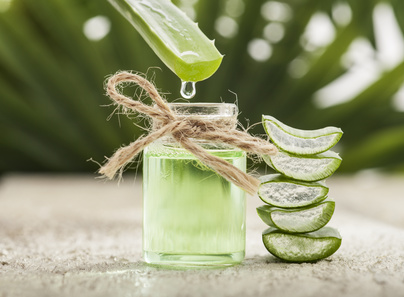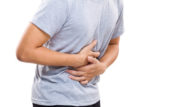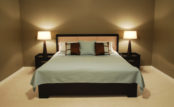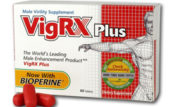By Steven Hutchings My favorite scene in Collateral (aside from that moment in the alley when Tom Cruise offs the bad guys who took his briefcase) is a good analogy for people with seasonal affective disorder (SAD).
My favorite scene in Collateral (aside from that moment in the alley when Tom Cruise offs the bad guys who took his briefcase) is a good analogy for people with seasonal affective disorder (SAD).
It’s a brief interaction between Jamie Foxx and his stressed-out client. He’s a cab driver and she’s a lawyer. She mentions why she’s anxious and he tells her his remedy for stress during his darkest moments: he takes five minutes out of his day to gaze on a postcard of a tropical island, during which he mentally travels to that warm climate with plenty of sunshine.
Then, when he feels better, he returns to reality and back to his cab
While it’s doubtful you’ll cross paths with a hitman in a taxi this winter, it’s not impossible you’re feeling blue. Estimates suggest that between 10 to 20% of adults have mild symptoms of seasonal affective disorder, or SAD, otherwise known as winter depression.
How to Tell If You Have SAD
Symptoms of SAD can be difficult to spot because they’re similiar to other forms of depression. There are a few hints, though, one of the more obvious being when depression symptoms start around September or October and continue until Spring.
SAD symptoms include:
- Feeling sad, grumpy or anxious
- Lost interest in usual activities
- Increased hunger – especially for carbohydrates
- Weight gain
- Sleep disturbances and drowsiness
As a rough guideline, risk goes up with distance from the equator – it’s seven times more common in Washington State than in Florida, for example. SAD appears more often in women than men, typically appearing after 20, after which risk decreases.
To put this another way, if you live in an area with short winter days, are between 20 and 55, you’re female and have a mother, father or sibling who’s had SAD, and your symptoms arrive in September or October and let up in April or May for two years in a row, then guess what?
You’ve probably got seasonal affective disorder. And a dead giveaway – you travel to a sunnier climate and the symptoms disappear.
Note that men can also get seasonal affective disorder, though less often.
Sunlight and Hormones
Theories abound with SAD and why it affects some people but not others. Much remains unknown, but researchers agree on one thing: SAD appears most often in people who are sensitive to light – or lack of it.
Sunlight in the morning appears to be most beneficial to patients with SAD. This could be an issue of disruptions to circadian rythmn and made worse by fluctuating hormones. Sunlight controls melatonin, for example, a hormone that regulates biological functions.
Observers note that hibernating animals have high levels of melatonin. It’s not impossible that melatonin may also have a seasonal – if not unwelcome – effect on humans.
As well, some evidence links reduced natural light to disruptions in biological patterns and the dance of hormones and neurotransmitters that contribute to the wake/sleep cycle – melatonin, seratonin and dopamine among them. Case in point: a study released in August found that camping improved sleep in people with insomnia. A possible explanation is that the body is synced to natural light and not used to artificial lighting.
Treatment For Seasonal Affective Disorder
Granted, it’s December. We’re not in camping weather, at least not here in the Pacific Northwest, where the view from my window is dank and depressing. The temperature isn’t much better, at a bone-jarring and rather unseasonal -3°C.
And unless you live in the sun belt or near the equator, I seriously doubt you’re going camping any time soon either. Should that be the case, your doctor might recommend light therapy, performed with a lightbox, of which there are two kinds:
Should that be the case, your doctor might recommend light therapy, performed with a lightbox, of which there are two kinds:
- Bright light treatment – In which the patient sits in front of the device for at least 30 minutes, preferably in the morning.
- Dawn simulation – A dim light that turns on in the morning and gradually brightens, like a sun rise. Cockle Doodle Doo.
Light therapy of either kind is one of the most effective treatments for seasonal affective disorder and is easy to do. Most patients report feeling better within a week, though you’ll need to keep doing light therapy until your symptoms normally disappear – probably around April or May – or they might return.
Other treatments for SAD include:
Antidepressants – These are medicines that regulate the brain chemicals that affect mood. Take these as prescribed, though, and stay on them until your doctor says otherwise.
Counseling – Cognitive behavioural therapy and other forms of counselling may reduce symptoms of SAD.
Home Remedies for Seasonal Affective Disorder
You can also try home remedies for seasonal affective disorder, including:
Natural Light
Get as much natural light as possible, and preferably between 6 and 8AM. Open your curtains and spend time in the sunniest room in your house. Go outside too, whether that’s a walk, a jog, a round of golf or another activity that brings you joy.
Take this a step further, if you like, with light-colored fabrics, walls and rugs. Do what you like to make your home sunny and full of natural light. Your disposition will eventually follow.
Watch Your Diet
Winter blues often give way to ice cream and comfort foods that lead to winter weight gain. One possible reason for your carb cravings? Reduced levels of serotonin – a brain neurotransmitter that regulates mood. Yet with tryptophan being a precursor to serotonin, it might be possible to regulate mood with tryptophan-rich foods, including:
Basmati Rice – A healthier version of white rice, basmati is slower to release sugar into the bloodstream. That should help people with SAD avoid the drastic changes in blood sugar that can lead to weight gain.
Bouillon – Fill your belly with this hot broth the next time you’re tempted to indulge in that bucket of Haagen Daz. This dieting trick convinces the body you’re already full, meaning you are less likely to overeat. Cereals – Cooked cereal, unsweetened muesli and bran flakes all release sugar slowly into the blood, which should help stabilize serotonin.
Cereals – Cooked cereal, unsweetened muesli and bran flakes all release sugar slowly into the blood, which should help stabilize serotonin.
Fruits – Apricots rank among the best fruits for people with SAD because they gradually increase serotonin levels. Ditto for apples, pears, grapes, plums, grapefruits and oranges.
Go Easy on Alcohol and Caffeine
A cup o’Joe goes a long way in the morning, but caffeine in general can lead to anxiety, muscle tension and GI problems.
Alcohol is a depressant too, which can make a low mood worse.
Instead of a caffeinated drink, try a tasty herbal option like chamomile tea. Cinammon, peppermint or ginger tea are pleasant alternatives to carbohydrates as well, and won’t leave you as jittery.
Move Around
The benefits of exercise are many, and reduced symptoms of seasonal affective disorder might be among them. Try to exercise outdoors, and preferably in the early morning, with a jog or bike ride, or swimming in warmer climates (Florida looks nice right about now!) or skating in colder locations. Just as good, try to exercise by a sunny window.
While you’re at it, help your body maintain its circadian rhythm. Try to rise and go to bed at the same time each day – even on weekends. Suck on an ice cube for a quick jolt to get up in the morning, or splash some water on your wrists. And if you’re especially masochistic, a cold shower will wake you up very quickly!
Take a Vacation
If snowbirding is an option, pack up and head somewhere sunny for a while. SAD symptoms are rare in warm locations, and most patients find their symptoms vanish in a sunny climate after just several days.
My vote is a trip to Florida. That may not be in the cards though, so however you choose to get through the dark winter days, be sure to connect with people. Many, many people struggle with bleakness at this time of year. So talk with them. Reach out and be in others’ company. Use the SAD treatment tips reviewed in this article, and remember: the sun will come out again. You’ll smile when it does.
+Steven Hutchings




